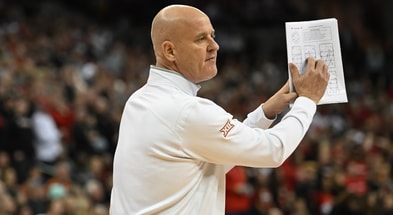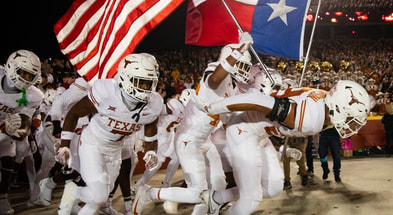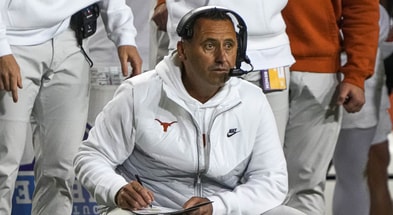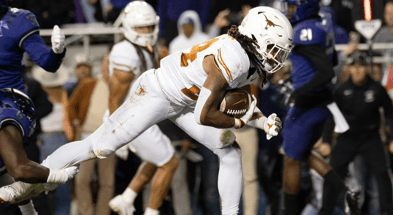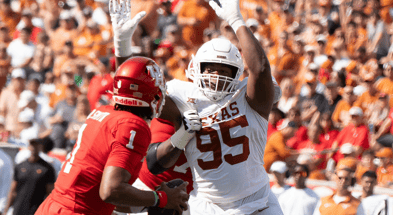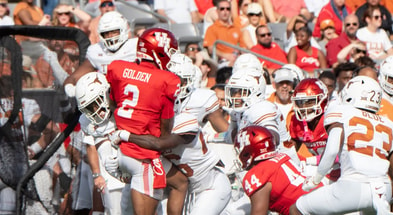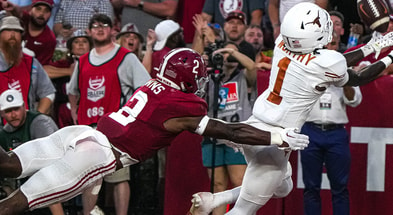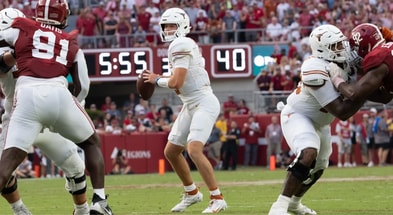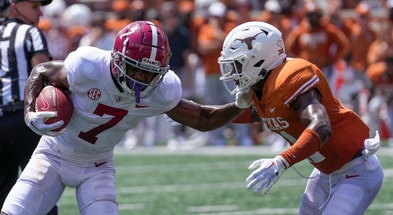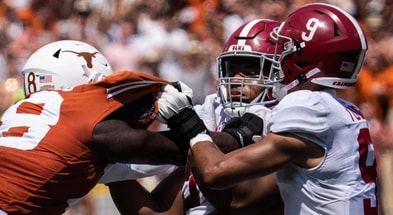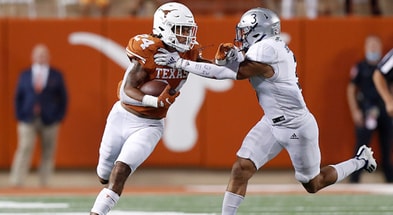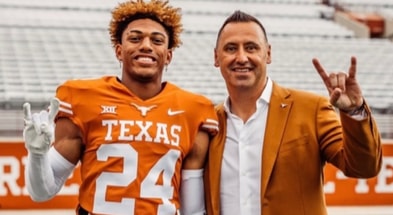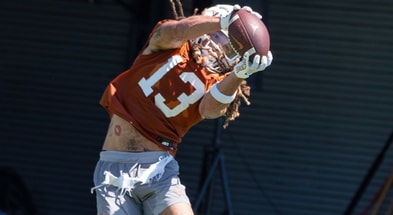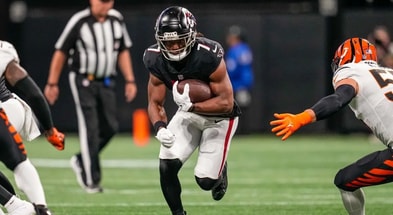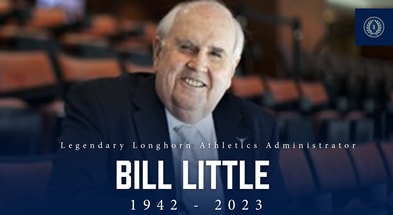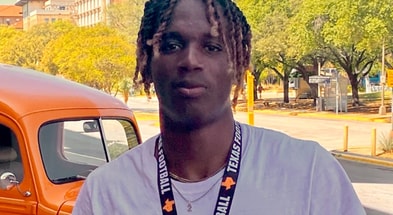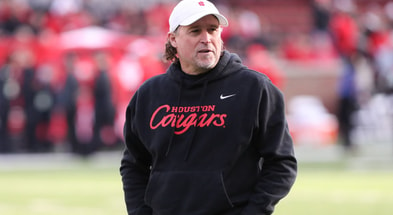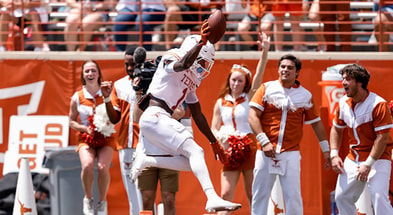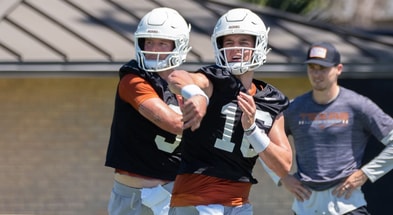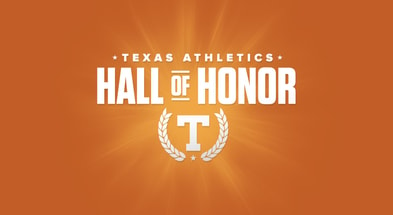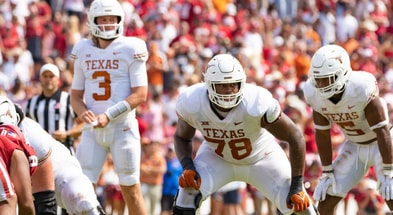Zach Evans and NIL free agency
TCU’s running back Zach Evans is no longer TCU’s running back. After entering the transfer portal, the former North Shore 5-star recruit has committed to Ole Miss.
This kicked off a massive debate on Twitter I stepped into when I came against the claim this was a serious loss for TCU.
I don’t believe it is. It might even be addition by subtraction.
Obviously Evans is a very talented player. He’s blazing fast and turned 92 carries in 2021 into 648 yards at 7.0 ypc with five touchdowns in six games. Then he developed a foot injury I’ve heard multiple different diagnosis for and shut it down until entering the transfer portal.
There’s considerable nuance and data to be considered with Zach Evans in particular, but one of the pieces of data which isn’t getting enough attention regards the changing nature of player acquisition in the NIL era.
The NIL salary cap
I think many of us are past the point of naïveté to believe star college football players weren’t previously getting compensated. However, it’s all much more out in the open now in the NIL era. As Zach Evans’ new head coach Lane Kiffin himself publicly noted…
…”well I don’t think people really say it this way but let’s not make a mistake…I mean we have free agency in college football and the kids, a lot of times go to where they get paid the most. No one else is saying that maybe but the kids say, ‘this is what I’m getting here, for NIL’ and so what we really have, it is what it is, free agency has been created in college football.”
-Lane Kiffin
Did Ole Miss offer Zach Evans a raise to come play in Oxford? I don’t know, but it seems to at least be plausible. Obviously a talented player should collect a nice pay day if he can, that’s not an issue.
Here’s the issue, presumably each team only has a certain amount of money within the community they can afford to commit to NIL-paying their players…and Evans is likely to command a pretty good chunk of change as a blazing fast running back with name recognition.
Let’s get to the free agency metaphor which Kiffin aptly provided to describe the process. If the transfer portal is free agency for college football, then college football in many respects is now more akin to the NBA than it is to other sports.
You CAN add game-changing pieces through the portal, just as NBA team can occasionally add a free agent who makes them a playoff contender, but star free agents tend to arrive at the destination markets in the NBA for the same reason as you’re seeing in college football. Salary caps are meaningless when there’s big money to be made in endorsements.
Endorsement money is going to be stacked higher in some locations than others. Texas is a big winner from NIL because they are THE team in a big city (Austin) and have loads and loads of football-crazy, monied alumni and fans. SEC programs who already had enough commitment from their alumni and donors to commit big money to recruiting beforehand aren’t going to miss out in the NIL era either. Other programs who have smaller fanbases, fewer living alumni, and smaller local markets? Tougher to maximize here.
For the other programs, you’ll tend to do best either with “free agents” who aren’t hot commodities for whatever reason but have superstar potential or with role players.
Oklahoma State did great the last few seasons adding grad transfers from smaller schools who were solid, proven football players and could come in and start as role players with little development. Oklahoma has done their best work of late with star transfer quarterbacks and seem to be back on that train with the addition of Dillon Gabriel.
Here’s the material point, each program is going to have a certain amount of NIL money they can throw around and will need to decide the best way to allocate it.
How do programs want to spend their money? What positions and which particular athletes? You want to commit a chunk of change to Zach Evans?
Running backs in a salary cap system
College football is different than the NFL. For a lot of programs, there’s hardly an upwards limit in terms of NIL funding for players. Texas’ new NIL initiatives guarantee hundreds of thousands of dollars for scholarship offensive linemen.
Even at a place like Texas though, how many big money star players do you want to be committed to via NIL? Additionally, how many can you realistically have when a skill players’ endorsement market is capped by the limited number of touches he’ll get if he’s surrounded by other star players? Whatever may or may not be promised to a player, there’s no doubt a player who’s a star with big numbers is going to be able to make a lot more money than a really talented player who is a bit player now, even if he might be a better pro down the line.
This leads us to Zach Evans, who has two knocks against him if you’re thinking of him as a potential salary cap filler, especially at a smaller program like TCU.
The first knock is that he’s a running back, and even in the college game a running back has diminished value in the modern game. Ole Miss runs Lane Kiffin’s RPO spread system, which is essentially using maneuver warfare (infiltration tactics) to open up room to run the football.
They had four players get 100+ carries this season, the leader was quarterback Matt Corral and then three running backs put up the following stats:
- Jerrion Early: 133 carries, 770 yards, 5.8 ypc, five touchdowns.
- Snoop Conner: 131 carries, 651 yards, 5.0 ypc, 13 touchdowns (he’s thick).
- Henry Parrish, Jr: 105 carries, 551 yards, 5.2 ypc, three touchdowns.
They need fresh backs to plug in, but obviously the system makes running backs at a certain baseline of talent pretty fungible. Ole Miss may see Evans as worth it, a useful weapon to abuse teams in the space created by their system. They certainly run the ball a lot so it makes some degree of sense, but you’d raise your eyes if they (hypothetically) had to pay him a large sum of money which precluded them from adding a better offensive tackle, a defensive linemen, or a cornerback they could otherwise have had.
For TCU, if Ole Miss wants to throw money at him to come play for their school (assuming such has even happened), is it worth matching? Almost certainly not.
The second knock concerns Zach Evans in particular as opposed to running backs in general and widens the gap between his potential value to Ole Miss vs TCU.
Zach Evans is notably absent when his teams need him in big moments. In the first North Shore State Championship win he was bottled up by Duncanville before ultimately sitting on the bench for their dramatic Hail Mary winning play. The following year he was kicked off the team for the State Title game and once again, quarterback DeMatrius Davis won without him.
His recruitment was crazy. Some highlights:
- He missed the first half of a playoff game against powerhouse Lake Travis to take the ACT after he decided to graduate early.
- Signs a LOI to Georgia after flirting with most every SEC power of significance.
- Decides not to announce he’s going to Georgia but instead offers a vague apology for “mistakes” he’s made.
- Georgia releases Evans from his LOI.
- Evans enrolls at TCU.
Reading between the lines, you get the sense he was relegated to TCU because the SEC schools cooled on trying to procure his services.
At TCU he tended to get a lighter load in the run game, despite the system ostensibly being built to serve his talents, regularly tapping his helmet to withdraw during big drives against Texas. The most touches he got in a single game was 23 in the Week 2 battle with Cal (22 carries, one catch). In every other game he was under 20 carries while the soon-to-retire Gary Patterson offered up that it was selfish for a school to give their back too many carries as Texas had allegedly done with Bijan Robinson.
Then he had the unclear foot injury and ultimately shut things down until the end of the year before portaling out. Among the games he missed was the Oklahoma game, one in which teammate Max Duggan played on a broken foot.
Suffice to say, he hasn’t been the most reliable player.
If I’m Sonny Dykes, inheriting a number of talented running backs aside from Evans and bringing a system which is heavy on using the passing game to set up the run, I’m hesitant to commit to Evans regardless of NIL salary cap concerns. If I’m theoretically guiding the allocation of accumulated NIL booster funds? No way I want the lion’s share allocated on a running back, particularly not one with commitment concerns.
Space force in the NIL era
Quarterbacks are going to command big money in the NIL era, it’s just the nature of the beast. They make more game-changing decisions for your team than any other position and then they tend to be the face of a program. Obviously a star player in such a role is going to be extremely marketable.
Running backs are also super marketable, which is partly why you’ve seen so many NFL teams make the mistake of committing salary cap to star players only to end up paying for rapidly diminishing returns while key pieces on the O-line or elsewhere are allowed to walk. If a team is going to run the ball heavily, it’ll be hard to avoid committing money to the star athletes who get high volume of touches and he’s going to sell more tickets than the line, even if they are mostly responsible for his success.
Were I in charge of distributing funds though, I’d obviously try to keep my powder dry for the space force positions.
How many people can be plus athletes at 6-foot-5, 300+ pounds? Not many, so if you can get someone at left tackle you should. Ditto for Edge, deep threat receiver, and island cornerback. NFL draft positions and pay scale typically reflect this and for good reason.
At other positions? You need to be making an above average impact in some facet of the game to justify an above average salary. For a program without the funds to guarantee hundreds of thousands for any given scholarship player, you probably want to think space force when distributing funds.
Additionally, the obvious space force stars are going to be particularly hard to come by out of high school. If there’s not even a hint of policing from the NCAA then players with high level attributes are going to be in insane demand out of high school.
But there are always tons of guys who aren’t obvious in high school and become obvious as stars in the G5. The challenge Lane Kiffin was outlining was what these players are going to do. Obviously a lot of them are going to get the big NIL cash they couldn’t get as high schoolers now they have the opportunity. This has a lot of ramifications for the game I’m going to try and bullet point.
- Smaller programs should try and use their NIL money, such as it is, to retain star players they find rather than drawing in stars from the high school ranks. If I’m TCU, I’m emphasizing holding onto Quentin Johnston over Zach Evans.
- For bigger schools, it’s better to have an open depth chart at a position than one cluttered with average or limited players. Having an open depth chart at a position is like having cap space, you’d rather be a possible destination for a star “free agent” than having an “okay” player in a key role.
- The underdog play is to try to use NIL for the space force positions and then elsewhere rely on evaluation and scheme fit to maximize the roster.
The college game is changing a lot and it’s starting to work more and more as a pro game and not like a minor league, either. If anything, it’s like a lower level European soccer or basketball program. You’re a professional for a team trying to win, but you have to balance the possibility of heading up to a higher level for more money as well because your own program and development isn’t being directed by a bigger franchise who’s priority is your development and maximization down the line.
Zach Evans’ choice makes sense for him, play in a friendly scheme on a team who often distributes carries and keeps a heavy load off the backs. It makes for TCU as well though.
How do you see the game changing with NIL and the transfer portal? Discuss for free on the Flyover Football board!
